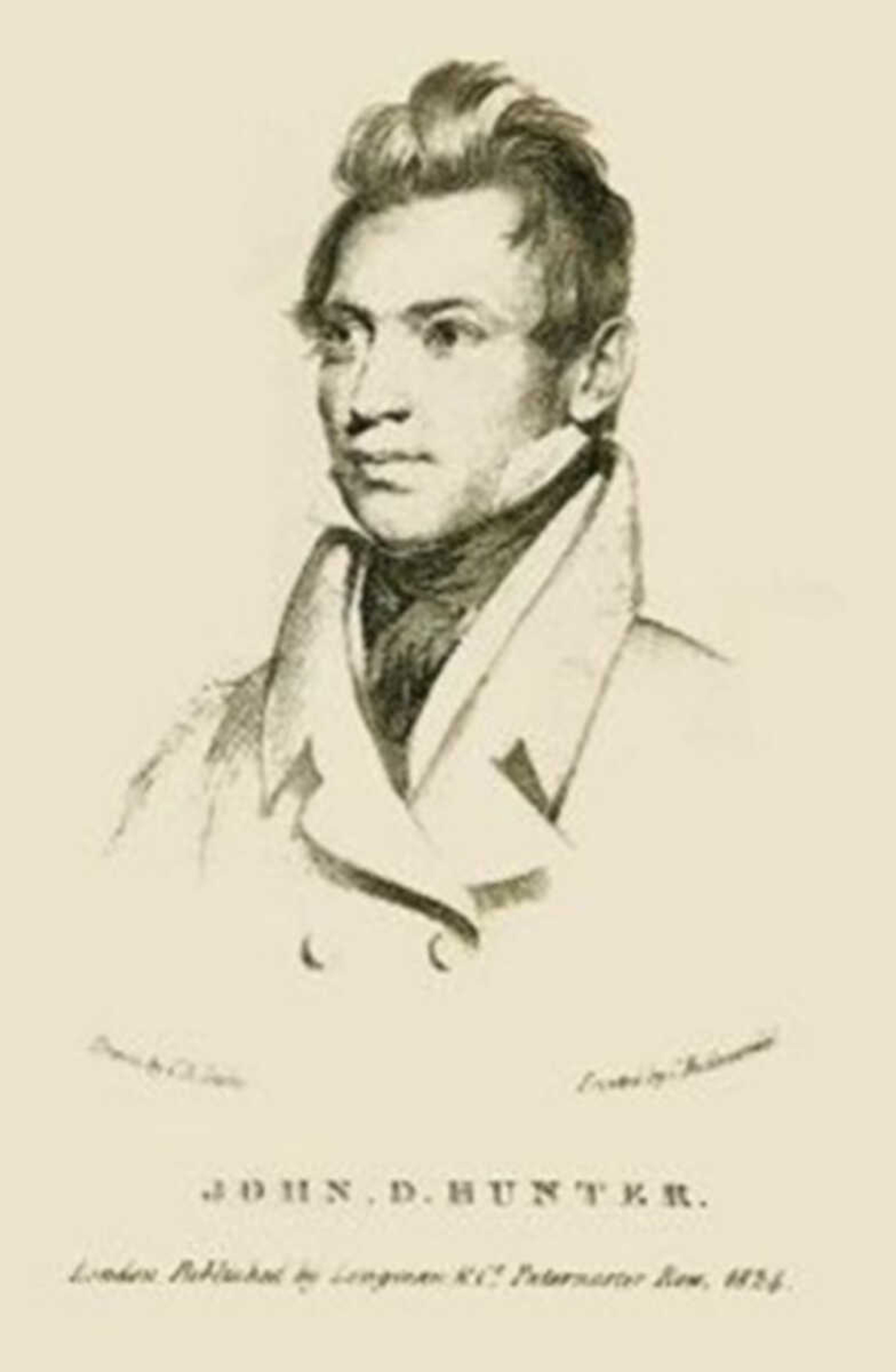In 1823, the book, "Memoirs of a Captivity Among the Indians of North America" appeared in Philadelphia. The author, John Dunn Hunter, claimed Kickapoo Indians massacred his family and captured him at age 3, in about 1801. The band later moved west to what is now eastern Kansas, where Indians captured him again. He ended with the Osage tribe until 1816. During this time, a band of Osage and Dunn Hunter supposedly traveled to the Pacific Ocean. White fur traders took him in, introduced him to frontier society, and gave him the surname of "Hunter."
One of the traders, Capt. Watkins, took Dunn Hunter east, where he decided to learn to read and write at a school in Cape Girardeau operated by George Simpson. While there, a local man, John Dunn, took him under his wing. The boy's respect for Dunn prompted him to adopt the name "John Dunn Hunter." Dunn Hunter traveled east, and eventually to London, where he wrote his account.
No verification of the account of Dunn Hunter exists. A reviewer of the book sought to verify it, and without exception those who responded called Dunn Hunter an imposter. The respondents included experts on the native tribes William Clark and Henry Rowe Schoolcraft. The reviewer and local records failed to document others mentioned in the book.
John Dunn, supposedly a mentor to the young man, was a noted early settler of Cape Girardeau County elected in 1816 to a term in the Missouri Territorial Legislature. Dunn's letter dated Sept. 4, 1825, stated in part, "I have never known such a person as John Dunn Hunter, the reputed author. ... I have been a resident in the vicinity of this place for the last twenty years, during which time I have never heard of a person bearing the same name with myself in this country."
Additionally, no accounts document a school such as described by Dunn Hunter in this area in the 1810s, and George Simpson's name appears only in the local militia during the War of 1812.
Dunn Hunter drifted to Texas by 1825. He resided with a band of Cherokee, and the head man of the group, Richard Fields, sent him to Mexico to negotiate for a Cherokee settlement. He failed to convince the Mexican authorities and returned in April 1826. Dunn Hunter and Fields then conspired with others to form an independent state, culminating in the Fredonian Rebellion and independence declaration on Dec. 21, 1826. Other Cherokee leaders rejected this effort, ousted Fields, and sentenced Fields and Dunn Hunter to death. Dunn Hunter initially escaped, but was hunted down and hanged.
Did John Dunn hunter live the life he claimed in his book? Local records and the repudiation of others suggest not. Further, John Neal, a novelist and literary critic, knew Dunn Hunter in England, and claimed he was a runaway son of a tinker who fabricated the book. Nonetheless, at least one detailed modern analysis of the story concludes the account was accurate.
Connect with the Southeast Missourian Newsroom:
For corrections to this story or other insights for the editor, click here. To submit a letter to the editor, click here. To learn about the Southeast Missourian’s AI Policy, click here.










